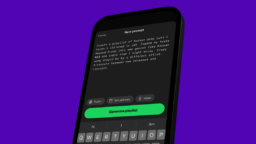There’s a notable omission from Daniel Ek‘s mission statement for Spotify to become the world’s No.1 audio platform: a commitment to improve the audio quality of the platform.
With competition from the likes of Amazon HD, TIDAL Hi-FI, and Deezer HiFi, Spotify’s lack of a high-fidelity music streaming could become a missed opportunity to woo potential audiophile subscribers.
(Just ask Neil Young, a long-time advocate for high-fidelity music streaming, who temporarily removed his music from Spotify in 2015 citing low audio quality.)
MBW can reveal today, however, that Spotify is definitely taking audio quality seriously – and may be working on an even more advanced sonic innovation for its service.
According to a US patent granted just last week – leaked to MBW by a source close to Daniel Ek’s company – Spotify appears to be working on a project involving 3D Audio.
The patent, which you can read here in full, is for a “Media content playback based on an identified geolocation of a target venue” and was filed in December 2018 and granted on September 22, 2020.
It states that “audio content is typically only transferred to listeners and their playback devices in a basic two-channel format in which it was originally recorded, without taking into account the playback capabilities of those devices to provide more immersive and interactive listening experiences to audio content consumers”.
Spotify’s solution, as claimed by the patent, is to enable “a media media playback system” to play back media content “in such a way that the media content sounds like it is coming from a direction of an identified geolocation of a sound source”.
“a media media playback system…. [where] the media content sounds like it is coming from a direction of an identified geolocation of a sound source.”
Spotify Patent filing
A bit of context before we take a deeper look at the tech Spotify has patented: 3D audio is an immersive sound format produced by using multiple microphones to make an audio recording.
As explained by the Verge in this article from 2015, 3D Audio “is not to be confused with surround sound”.
“In contrast to typical stereo and surround sound systems, three-dimensional audio systems provide a listener with the perception that they are physically present in a three-dimensional environment where audio is being produced, without limiting the listener to a specific sweet spot, as generally required by surround sound systems,” states Spotify’s patent.
It adds: “Three-dimensional audio recordings are capable of providing an accurate perception of sound, as heard in the real world, by capturing sound waves as they are modified by a listener’s aural anatomy (e.g., the size and shape of the head, ears, ear canal, density of the head, size and shape of nasal and oral cavities, etc.).”
3D Audio is starting to get a lot more attention in the music streaming world, with Spotify rival Amazon Music in particular having secured various 3D audio exclusives this year.
According to Amazon, Amazon Music HD‘s catalog of 3D music supports over a thousand tracks mastered in Dolby Atmos and Sony’s 360 Reality Audio codecs “from some of the world’s biggest artists”.
Those artists include Bob Marley: whose Legend: The Best of Bob Marley & The Wailers immersive 3D Audio is available exclusively on Amazon Music HD featuring songs like I Shot the Sheriff, Exodus, and Is This Love have mixed in Dolby Atmos for the first time.
The platform is also exclusively streaming an immersive 3D Audio version of Taylor Swift’s recent blockbuster album, Folklore.

While Spotify’s patent discusses 3D Audio in depth, the company appears to have a different plan for it, rather than straight-up music streaming.
The patent, which lists Spotify Research Scientist Rachel Bittner as the inventor, is for “Media content playback based on an identified geolocation of a target venue” (see image above).
The “target venue” in this instance is a sound source, and the “venue”, explains the patent, can be a business “such as a coffee shop or a concert venue”.
One of the scenarios where this technology could be used, explains the patent is by determining “a geolocation” of a device such as a smartphone, watch or other wearable and then providing instructions to a “media server, a direction of travel of the media playback device”.
It adds that it will then “play back media content received from the media server, wherein the media content comprises three-dimensional audio content, and wherein the media content is associated with a target location that is within a threshold distance of the media playback device”.
This sounds very much like geo-targeted audio advertising, using 3D audio.
“The media playback system plays back media content in such a way that the media content sounds like it is coming from a direction of an identified geolocation of a sound source.”
Spotify patent filing
Spotify, according to the patent wants to play “promotional tracks associated with target venue” when it determines that a device is a) within a “threshold distance” of that venue and b) that the device is capable of playing back 3D Audio.
Following that, “the media playback system plays back media content in such a way that the media content sounds like it is coming from a direction of an identified geolocation of a sound source”.
So let’s say you’re walking around with headphones on, listening to music via Spotify’s Free Tier.
When the music is interrupted by an ad, that snippet of promotional audio content could be triggered by your proximity to a nearby business.
If that business is to your left – that promotional audio could sound like it’s coming from your left, until you turn around, at which point it will sound like it’s coming from whatever direction you are facing in relation to the sound source.
Clever stuff.
The patent explains how this can be made possible because “one or more movement-determining devices may be physically and/or wirelessly connected to an audio requesting device, such as media playback device”.
“For example, headphones connected to media playback device may comprise one or more accelerometer for detecting a change in location.”
Although Spotify’s use of 3D Audio detailed in the patent might disappoint those hoping to see more immersive music on the platform, the future promotional opportunities presented by the technology will likely please investors.
The advertising sector has been hit hard during the COVID-19 pandemic: SPOT’s ad-supported revenues in Q2 2020 (€131m) fell 21% YoY, as well as declining by €17m (-11%) on the €148m posted in Q1 2020.Music Business Worldwide





